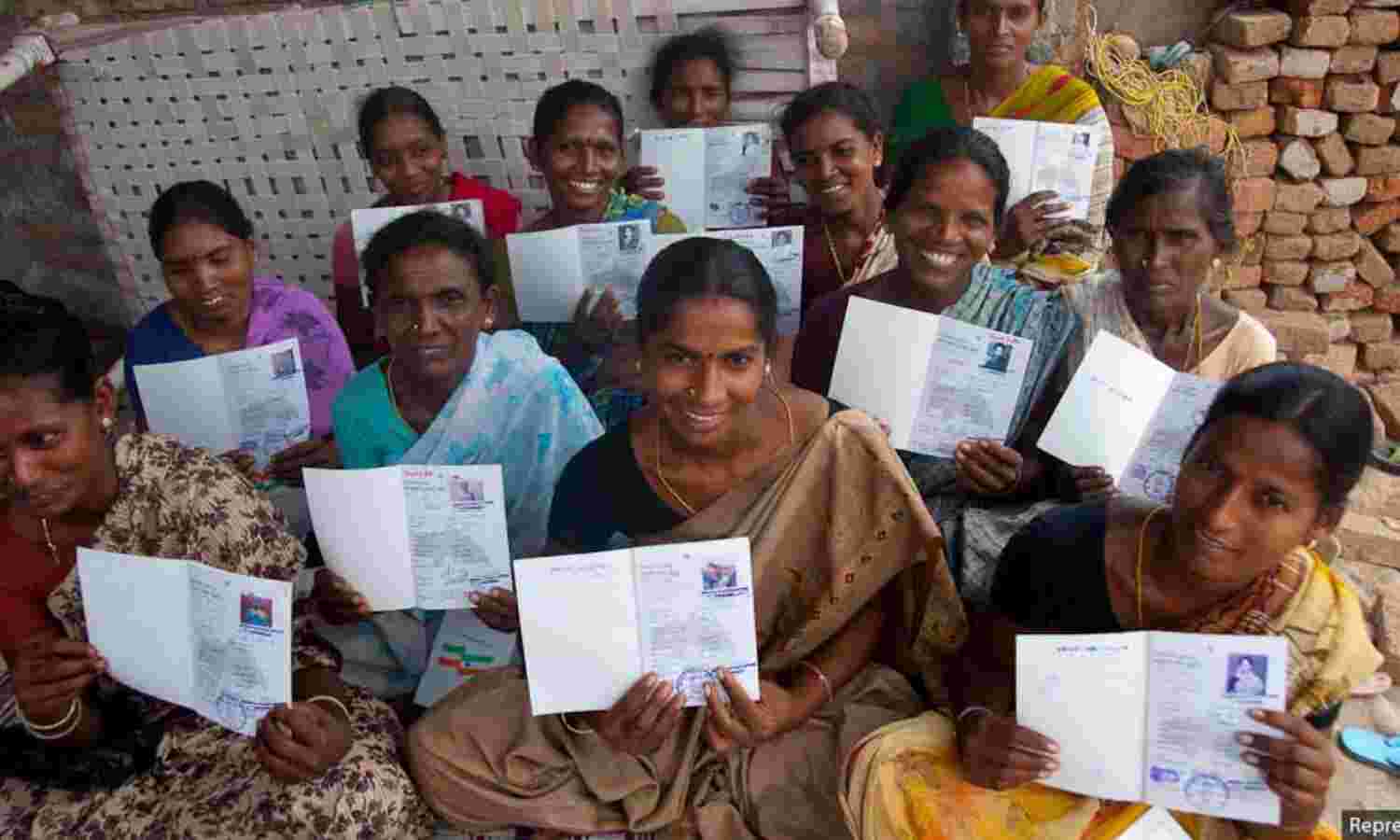Lakshadweep, Meghalaya Have Most Women Land Holders; Punjab, West Bengal Fewest

Lakshadweep and Meghalaya are the best among all 35 states and union territories of India at providing land rights to women, while Punjab and West Bengal are the worst, according to an index created by the Bhubaneswar-based Center for Land Governance, an arm of consultancy firm NR Management Consultants (NRMC).
The index was prepared using data on women’s operational holdings from the agriculture census of 2011, the share of adult women owning agricultural land from the Indian Human Development Survey of 2011-12, the share of women-headed households owning land from the Socio Economic Caste Census of 2011, and the share of women owning house and/or land (alone or jointly) from the National Family Health Survey of 2015-16.
The index ranks states in terms of women holding land rights in percentage points. On average, 12.9% of Indian women hold land.
In the southern states, an average of 15.4% of women hold land, and in the northeastern states, 14.1%. With these low figures, these states outperform the northern states where 9.8% of women hold land, and the eastern states where 9.2% of women do.
Secure and impartial land rights for women are crucial for a country to achieve sustainable developments goals such as ending poverty, ensuring food security, achieving gender equality, and making cities and human settlements inclusive, according to the Sustainable Development Goals (SDGs) set by the United Nations.
The government has professed an intention to give joint titles to men and women while distributing land and home sites since the Sixth Five Year Plan (1980-85). However, the data show a poor record.
Women hold 12.8% of operational land holdings
Women constitute a third (32%) of India’s agricultural labour force and contribute 55-66% to farm production, according to the gender and land rights database of the Food and Agriculture Organization of the United Nations (FAO).
Yet, women hold only 12.8% of operational holdings in India--lower than the 17% in China--over an area constituting a 10th (10.3%) of the total area of India’s operational holdings, according to the Center for Land Governance index.
The trend that sees men shifting to nonfarm activities further increases the responsibility of women in agriculture, a 2013 policy brief by Oxfam-India, an advocacy, said. “Without land titles, women are not recognised as farmers, and thus are not able to access credits and government benefits,” the brief said.
Lakshadweep (41.0%), Meghalaya (34.4%) and Andaman and Nicobar (29.7%) are the top three states in percentage of land holdings with women, based on data reported in agriculture census 2011.
More women in the southern states hold land as compared to the rest of the country. All the southern states fall within the first 10 ranks, with Andhra Pradesh reporting the best figure--17.2% of the state’s women hold land, giving it the fourth place in the all-India ranking.
In the percentage of women holding land, large agrarian states such as Madhya Pradesh (8.6%), Rajasthan (7.1%) and Uttar Pradesh (6.1%) rank low on the index, with Punjab (0.8%) the lowest.
The average size of women’s land holdings in the country is small. A woman holds an average of 0.93 hectare (ha), while men hold 1.18 ha. The average figure is 1.15 ha.
The index for scheduled-caste (SC) and scheduled-tribe (ST) women’s land holdings is 19.7%, which is significantly higher than the national average of 12.9%.
“It means that the ratio of SC/ST women’s land ownership to that of the SC/ST men is better than the same ratio in case of all social groups combined,” the index states. “This indicates comparatively better rights for women among dalit and tribal communities.”
Note: The index prepared by the Centre for Land Governance uses national surveys conducted before the creation of Telangana. Hence the story talks about undivided Andhra Pradesh.
(Mohan is an intern and Tripathi is a principal correspondent with IndiaSpend.)
We welcome feedback. Please write to respond@indiaspend.org. We reserve the right to edit responses for language and grammar.


